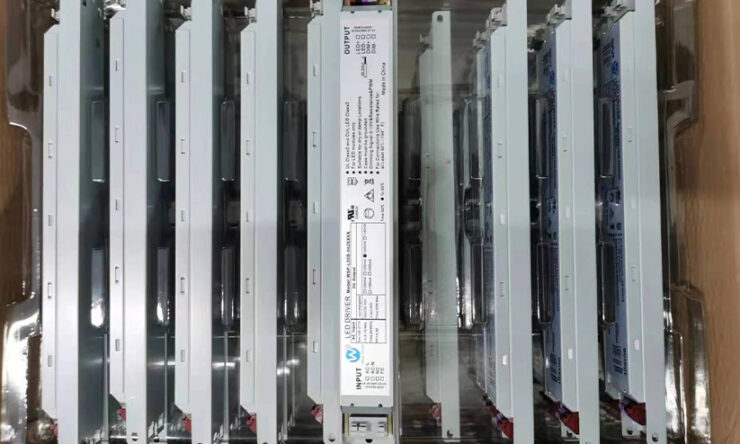Introduction
LED lighting has grown exponentially in popularity due to its energy efficiency, long lifespan, and environmentally friendly attributes. An indispensable component of any LED system is the LED driver, which guarantees proper operation by managing power delivery. There are two main types of LED drivers: isolated and non-isolated. This blog will offer an in-depth analysis of the differences between isolated and non-isolated LED drivers, discussing their advantages, disadvantages, and appropriate applications.
Understanding LED Drivers
LED drivers are electronic devices that supply power to LED lights by converting input voltage and current to a form suitable for the LED. They also safeguard LEDs from voltage fluctuations, ensuring their longevity. LED drivers can be classified into two categories:
- Isolated LED Drivers
- Non-Isolated LED Drivers
Isolated LED Drivers
Isolated LED drivers utilize electrical isolation between the input and output circuits. They employ a transformer to transfer energy between these circuits, ensuring no direct electrical connection exists. The transformer also plays a crucial role in providing galvanic isolation, thereby preventing electrical shock, enhancing safety, and protecting the LED and other components from potential damage.
Advantages of Isolated LED Drivers:
- Safety: Galvanic isolation significantly improves safety by preventing electrical shock or short circuits that could damage the LED or other components. This feature is particularly critical in applications where the risk of electrical shock is high, such as in wet or outdoor environments.
- Noise reduction: Transformers in isolated LED drivers can help reduce electromagnetic interference (EMI) and radio frequency interference (RFI) in the system. This noise reduction is especially beneficial in sensitive applications, such as medical devices or precision instruments.
- Versatility: Isolated LED drivers can handle a wide range of input voltages, making them suitable for various applications and power sources. They are also adaptable to different output voltage and current requirements.
Disadvantages of Isolated LED Drivers:
- Cost: The inclusion of a transformer increases the overall cost of isolated LED drivers, making them more expensive than their non-isolated counterparts.
- Size and weight: Transformers contribute to the bulkiness and weight of isolated LED drivers, which can be a limiting factor in certain applications, such as compact lighting fixtures.
- Efficiency: The energy conversion process in a transformer can result in power losses, leading to slightly lower efficiency levels in isolated LED drivers compared to non-isolated drivers.
Non-Isolated LED Drivers
Non-isolated LED drivers, as the name suggests, do not provide electrical isolation between the input and output circuits. Instead, they use inductors, capacitors, and other electronic components to regulate power and maintain a constant current.
Advantages of Non-Isolated LED Drivers:
- Cost: Non-isolated LED drivers are generally more cost-effective due to the absence of a transformer, making them an attractive choice for budget-conscious projects.
- Size and weight: Without the transformer, non-isolated LED drivers are lighter and more compact than isolated drivers, making them suitable for applications with limited space, such as slim or portable lighting fixtures.
- Efficiency: Non-isolated LED drivers typically exhibit higher energy efficiency than isolated drivers, as there are fewer power losses in the absence of a transformer.
Disadvantages of Non-Isolated LED Drivers:
- Safety: The lack of electrical isolation in non-isolated LED drivers can lead to increased risk of electrical shock or short circuits, especially in environments with high moisture levels or potential contact with conductive materials.
- Noise: Non-isolated LED drivers are more susceptible to EMI and RFI, which could affect the performance of other electronic devices or systems in close proximity.
- Limited input voltage range: Non-isolated LED drivers usually have a narrower input voltage range compared to isolated drivers, which can limit their adaptability in some applications.
Applications of Isolated and Non-Isolated LED Drivers
Isolated LED drivers are ideally suited for applications requiring increased safety and protection from electrical hazards, such as:
- Outdoor and architectural lighting
- Industrial lighting
- Medical devices and equipment
- Commercial lighting in damp or wet environments
Non-isolated LED drivers, on the other hand, are well-suited for applications where space, cost, and efficiency are critical factors, including:
- Residential lighting
- Slim or portable lighting fixtures
- Display and signage lighting
- Automotive and transportation lighting
Making the Right Choice: Factors to Consider
When choosing between isolated and non-isolated LED drivers, several factors should be taken into account:
- Safety requirements: If the application demands a high level of safety and protection from electrical hazards, an isolated LED driver is the better choice.
- Space constraints: For applications with limited space, a non-isolated LED driver’s compact size and lighter weight might be preferable.
- Cost considerations: Budget constraints may favor the use of non-isolated LED drivers, which are generally more cost-effective.
- Efficiency: If energy efficiency is a primary concern, non-isolated LED drivers typically offer higher efficiency levels.
- Noise sensitivity: For applications requiring minimal EMI and RFI interference, isolated LED drivers with transformers can help reduce noise.
- Input voltage range: Consider the available power source and its compatibility with the LED driver’s input voltage range. Isolated LED drivers can handle a broader range of input voltages, making them more adaptable.
Conclusion
Both isolated and non-isolated LED drivers have their unique advantages and disadvantages. Ultimately, the choice between the two depends on the specific requirements of the application, such as safety, size, cost, efficiency, and noise sensitivity. By understanding the differences between isolated and non-isolated LED drivers, you can make an informed decision that best suits your lighting project’s needs. With the increasing demand for LED lighting solutions, being well-versed in the intricacies of LED drivers is essential to ensure the best possible outcome for any project.


